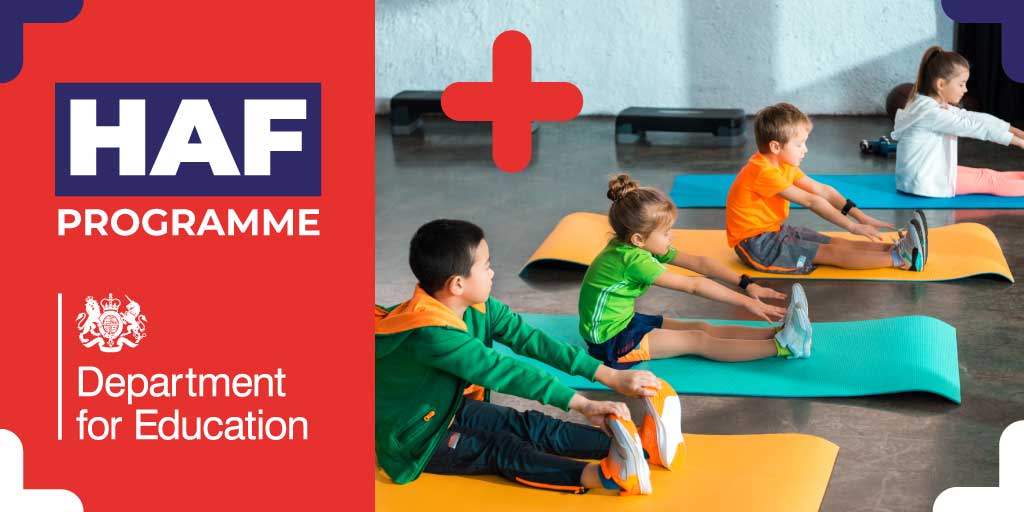Utilizing data in sports coaching programs is essential, and for HAF programs, no less so. You need to make sure you’re using data to find the right venues that appeal to participants and enhance their impact in communities. Data-driven strategies can significantly improve the success of these programs, helping organizers make informed decisions, target their audience more effectively, and offer a more personalized experience.
Here are some areas to look at to professionalize and broaden your HAF programs’ participation levels:
1. Understanding your target audience for HAF
Data can provide insights into demographics, preferences, and behaviours of potential participants. Key data points for HAF programs include:
- Age, gender, and location: Assess based on your cohort what participants are more likely to participate in and where is central or local enough for them to attend. This will help you create a programme of activities which will support the broadest degree of access.
- Socioeconomic factors: The aim of HAF is to support pupils from lower socioeconomic backgrounds. Utilizing the data on capacity will help you meet the needs of underserved communities.
- Interests and participation trends: Don’t forget to ask. Surveys, social media insights, or website analytics can reveal which sports or activities are trending in certain age groups or regions.
2. Improving HAF program offerings
Using data to analyze feedback from current participants can help refine your HAF program offerings to make them more appealing. Consider gathering data through:
- Surveys and feedback forms: Regularly ask participants for feedback on existing coaching programs and during HAF sessions about the variety of sports offered and logistical factors like scheduling and location.
- Retention data: Look at the data on who drops out of your program and why. This can help you understand potential barriers (e.g. time commitment, travel, activities and program location) and adjust your approach to minimize dropouts.
→ HAF Alliance – Utilizing HAF monitoring and mapping data

3. Optimizing scheduling and logistics
Data can also streamline logistics, ensuring that participants can easily fit your program into their holidays. You can:
- Analyse attendance data: Look for patterns in when participants are most likely to attend. For example, if most participants want to play football, scheduling sports programs that coach several skills would be impactful.
- Use location data: Data on where your participants are coming from can help you choose convenient locations for your sessions. This is a key metric when you need proof of the social impact your HAF program has on its community.
- Easily track this data on the Coordinate Sport platform, tracking attendance, bookings at venues and supporting coaches with managing their schedules and feedback on the programs.
4. Leveraging social proof and testimonials
Word of mouth and social proof can be powerful tools in boosting participation, and more importantly, justifying the significance of your HAF program. Data on participant satisfaction can be used to create compelling testimonials, success stories and social proof. Here’s how:
- Collect testimonials and reviews: After participants complete a program or activity day, ask for their feedback. This doesn’t have to be formal; it can be administered by coaches during sessions.
- Use success stories: Analyse performance data to showcase how your program has improved participants’ skills, fitness levels, or knowledge of healthy eating preparation. Share these stories on social media, your website, and through marketing materials. Document the exchanges with platforms such as Coordinate Sport as social proof of your programme.
Remember, the easiest way to get young people involved is young people’s engagement and word of mouth. When young people get involved, more will follow when you keep their engagement at the centre of your programme.
5. Tracking and measuring success
Finally, it’s essential to measure the success of your data-driven strategies. Monitoring and tracking metrics for HAF programs include:
- Retention rates: Measure how many participants continue from one session or season to the next. A high retention rate indicates a successful program.
- Engagement metrics: Look at how participants interact with your content online, with your sessions and with your coaches. Anything from venue and coach engagement can improve or reduce the impact of your HAF program.
- Demographic metrics: It’s essential to know what parts of the community you’re providing support to so it can inform your activities and how much support you need to put into supporting weaker service areas or locations.
Data is a powerful tool for increasing participation in HAF programs. To understand the underserved community you’re looking to harness, you need to track and monitor your program so it can best serve these young people and their families. Regularly tracking your progress through data will ensure that your coaching program continues to provide healthy, active support to communities across the country.









